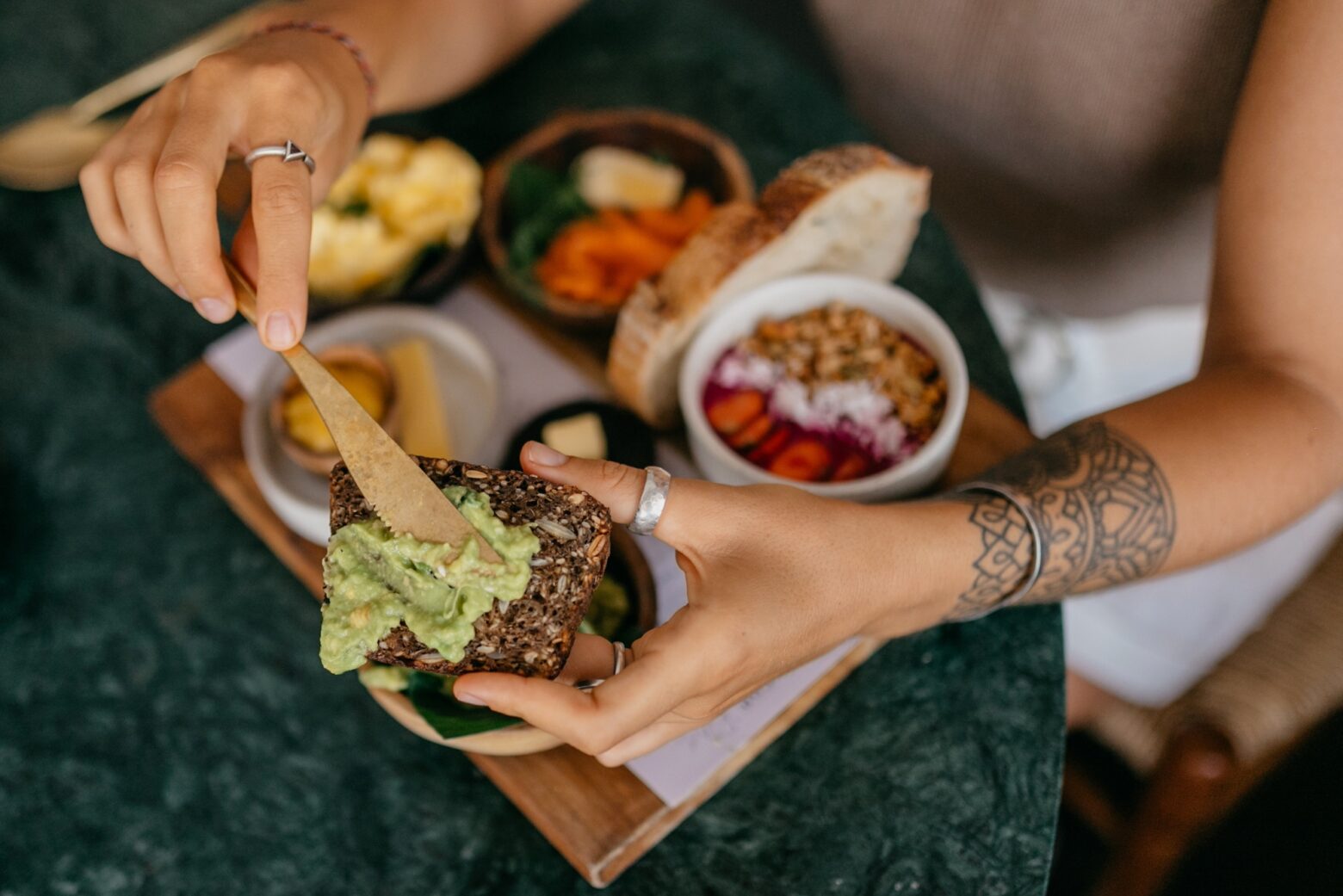The DASH Diet vs. The Paleo Diet: Which Is Better for Hypertension?

The DASH diet is heralded as the be-all, end-all diet for lowering high blood pressure. It’s the go-to diet recommended by the National Heart, Lung, and Blood Institute, and is one of the three top diets in the 2020-2025 Dietary Guidelines for Americans. [1]
The DASH diet and The Paleo Diet® both emphasize eating plenty of fresh produce and staying away from sodium, so what’s the difference? Are they equally as effective for hypertension? Let’s see what’s in common between the two diets and what may set The Paleo Diet apart.
What Is the DASH Diet?
DASH stands for Dietary Approaches to Stop Hypertension. It emphasizes eating plenty of fruits, vegetables, and whole grains while limiting salt, fats, and sugar. [2] DASH is considered a “flexible and balanced eating plan” [2] that can make a heart-healthy diet easy to follow, as it doesn’t require buying special foods—you can shop for this diet at the most basic local grocery store.
To lower high blood pressure, the DASH diet recommends limiting daily sodium intake from all sources to 1,500-2,300 milligrams. They also highlight the importance of choosing foods rich in other electrolytes (potassium, calcium, magnesium), protein, and fiber for the greatest benefits.
Calorie counting is also considered important, and the DASH guidelines lay out how many calories a person should consume based on gender, age, and activity level. They also define serving sizes and the number of calories for each food group to add up to the ideal calorie count for the day.
In a 2015 systematic review, the DASH diet reduced blood pressure by an average of 5.2/2.6 mmHg. It also improved other cardiovascular risk factors, especially in those already at an increased risk of metabolic syndrome and heart disease. [3]
The DASH Diet vs. The Paleo Diet
DASH allows more modern agricultural foods like grains, legumes, and dairy than The Paleo Diet. In fact, it recommends six to eight servings of grains or grain-based products daily, making up the largest food group of the diet. In this way, it’s much like the old food pyramid many of us grew up with, featuring grains at the base.
The Paleo Diet doesn’t focus as much on serving sizes, number of servings, or calorie counting. Instead, it looks at foods in terms of food quality—such as grass-fed beef or in-season produce—and nutrient density. These qualities make meals more satiating, which automatically helps control calorie intake.
While The Paleo Diet is a dairy-free eating plan, the DASH diet allows low-fat dairy products, recommending two to three servings daily. DASH also advises limiting meat and fish to two or fewer servings a day, while The Paleo Diet doesn’t limit animal proteins.
In fact, The Paleo Diet doesn’t dictate any macronutrient breakdown, but rather allows the individual’s own metabolism to dictate how much protein, fat and carbohydrate is consumed. That means the DASH diet might be considered a lower-protein diet, while The Paleo Diet is usually a higher-protein diet, which is better for us from an evolutionary standpoint.
Which Diet Is Better for Hypertension?
Both the DASH diet and The Paleo Diet encourage eating a variety of fruits and vegetables, which are rich in potassium and can help balance out sodium levels. However, it’s important to remember that inflammation is a major player in all forms of cardiovascular disease, including hypertension. [4]
The Paleo Diet’s anti-inflammatory effects have been backed by research. A 2022 meta-analysis used a statistical tool called the surface under the cumulative ranking curve (SUCRA) to analyze the effectiveness of different diets. The Paleo Diet came out ahead of DASH (67% vs. 62%) and all other diets examined for improving markers of chronic disease—including cardiovascular disease. [5]
When to Opt for the DASH Diet
A DASH diet is a good starting point for those breaking their addiction to processed foods, added salt, and any number of sugary treats. It can help guide a person toward concentrating on fruits and vegetables and other whole foods. Following any diet plan in general can help bring awareness to what a person eats on any given day.
Another example of when it might be best to opt for the DASH diet over Paleo is for those living in an institutionalized setting. An example might be someone who is hospitalized or living in a senior care facility. In that case, a DASH diet is more likely to be attainable through the care provided. Following The Paleo Diet in these scenarios might require lots of help from friends and family.
Potential Downsides of the DASH Diet
Even though the DASH diet was the runner-up to The Paleo Diet for improving markers of chronic disease in the meta-analysis, there are still some potential downsides when following it. For example, the DASH diet emphasizes food groups and numbers of servings, but it pays little attention to food quality. You are not discouraged from eating factory-farmed meat and poultry, refined “vegetable” oils, and grains.
Indeed, many grain-based foods are recommended by DASH, including cereal grains. These are highly acidic and promote bone demineralization due to their phytate content. And foods made from wheat are particularly harmful to the immune system and gut health.
A consequence of eating conventionally raised meats rather than free-range or grass-fed is that the meat will be lower in omega-3 fatty acids and higher in omega-6 fatty acids. However, a much greater concern than this is the consumption of vegetable oils that come from highly processed seeds—such as cottonseed, corn kernels, soybeans, and rapeseed (canola)—as they’re very high in omega-6s. This underconsumption of omega-3 fatty acids and an overconsumption of omega-6 fatty acids can lead to a host of problems, including inflammation.
Why Paleo Might Be Better to Follow Long Term
Going back to that 2022 meta-analysis, The Paleo Diet was the clear winner for lowering inflammation and reducing the risk of chronic disease. The Paleo Diet also emphasizes choosing high-quality whole foods that remain as close to nature as possible, and avoiding highly processed foods with low nutrient density.
Most antinutrients, like lectins and phytates, are avoided in this way of eating. On the other hand, nutrient-dense foods like grass-fed meats, wild-caught fish, cruciferous vegetables, and antioxidant-rich berries are what make The Paleo Diet so wholesome. Following a strict or flexible version of The Paleo Diet is a wise choice for a lifelong, healthy way of eating.
References
- U.S. Department of Agriculture and U.S. Department of Health and Human Services. Dietary Guidelines for Americans, 2020-2025. 9th Edition. December 2020. Available at DietaryGuidelines.gov.
- National Heart, Lung, and Blood Institute and National Institutes of Health. DASH Eating Plan. 2021 Dec 29. Available at https://www.nhlbi.nih.gov/education/dash-eating-plan
- Siervo M, Lara J, Chowdhury S, Ashor A, Oggioni C, Mathers JC. Effects of the Dietary Approach to Stop Hypertension (DASH) diet on cardiovascular risk factors: a systematic review and meta-analysis. Br J Nutr. 2015;113(1):1-15. doi:10.1017/S0007114514003341
- Aboukhater D, Morad B, Nasrallah N, et al. Inflammation and hypertension: Underlying mechanisms and emerging understandings. J Cell Physiol. 2023;238(6):1148-1159. doi:10.1002/jcp.31019
- Liang S, Mijatovic J, Li A, et al. Dietary Patterns and Non-Communicable Disease Biomarkers: A Network Meta-Analysis and Nutritional Geometry Approach. Nutrients. 2022;15(1):76. Published 2022 Dec 23. doi:10.3390/nu15010076
Betsy Schroeder
Betsy does research and writing for a few different websites in the natural health field after taking Masters level courses in Nutrition & Functional Medicine through the University of Western States.
More About The Author


